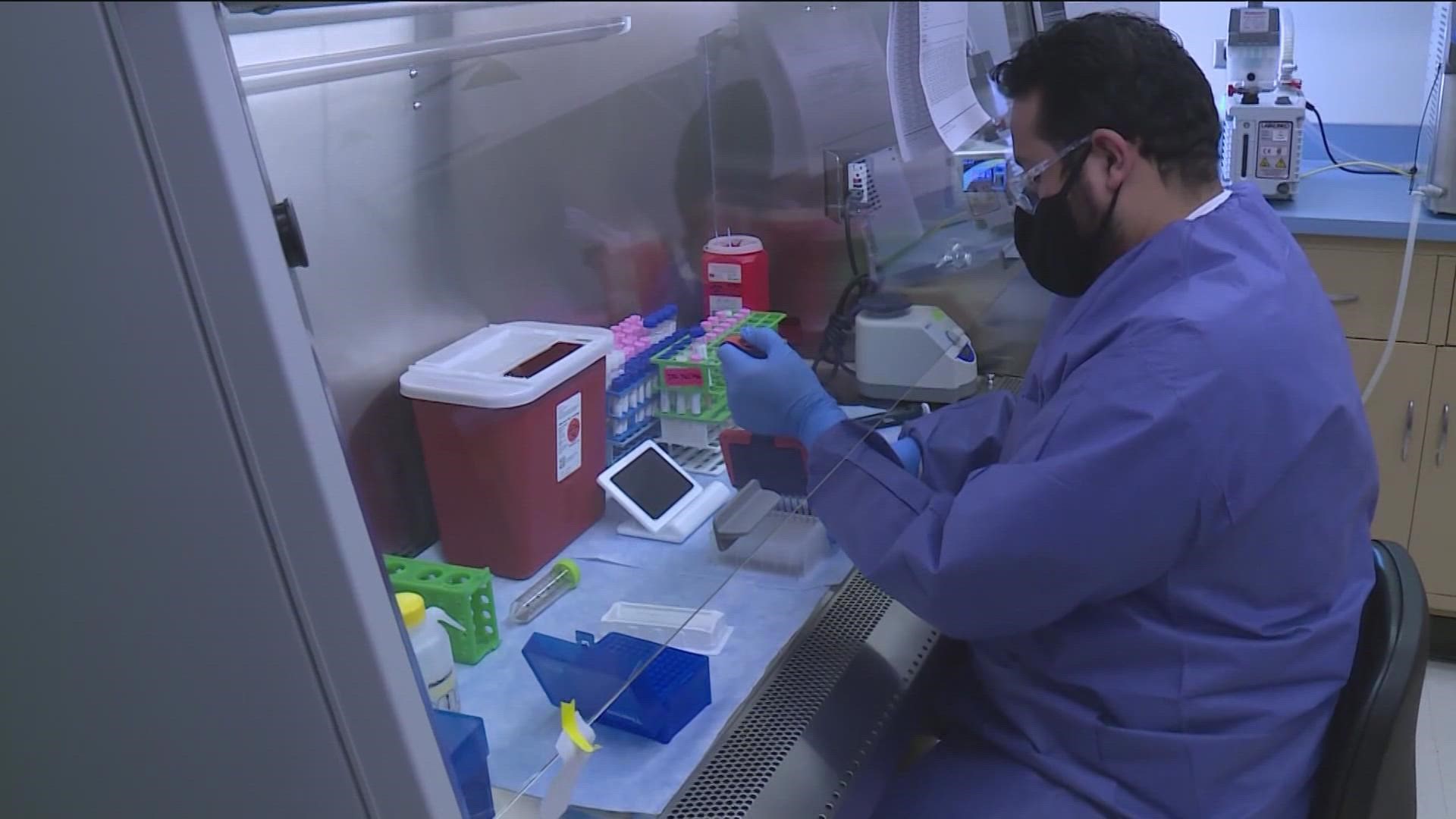BOISE, Idaho — It’s been 990 days since the State of Idaho announced its first confirmed case of COVID. Two calendar years later, socially, most people have moved on from the virus and virus protocols.
Dr. David Pate is the retired President and CEO of St. Luke’s and a member of Gov. Little's coronavirus working group. He says the COVID data for Idaho and abroad looks a lot different now, and no, it is not because the virus just went away.
“Clearly the activity is still out there,” Pate said. “There's a lot of home testing being done and then a lot of people not even testing.”
With poor data samples to draw from, it is hard to gauge what the complete spread of COVID looks like across Idaho. Yes, the state is in much better shape than in January of this year, when Idaho saw dire situations in hospitals, but a better situation does not mean a completed one.
“This has been unlike the typical kinds of peaks and valleys that we've had previously, where this has just kind of gone up and then kind of come down and just kind of hovered at a still a pretty high level of transmission,” Pate said.
New research on the COVID virus and its interaction with non-human animals highlights the fact that since 2020, yes we have learned a lot about the virus, but there is an incredible amount still left to learn. Scientists have identified dozens of animal species in the US that have been infected with COVID, and at least two species can transmit the virus back to humans with new mutations.
Those mutations can be dangerous, helping a COVID virus become more contagious or deadly. Or simply keeping the virus alive. The list of animals infected with strains of the COVID virus now includes rats. Specifically, rats tested in New York City.
“What was shocking is that 16 and a half percent of them had antibodies, meaning they had been infected at some point. 16.5% of millions of rats is a big number,” Pate said.
The new research, published by a group of reputable experts, concludes: “In summary, we found that the rats in NYC sewage system have been exposed to SARS-CoV-2, and that the Delta and Omicron variants can infect rats in addition to the Alpha and Beta variants. Our findings highlight the potential risk of secondary zoonotic transmission from rats and the need for further monitoring of SARS-CoV-2 in wild rat populations.”
“The only virus we've ever eradicated was smallpox. And that was because it doesn't get into any animals. I think we have missed many, many chances to potentially eradicate this virus. I don't think we can really think of that anymore because we've seen so much of the animal kingdom as well as in humans,” Pate said.
The Delta variant of COVID, the variant that powered a major Idaho infection wave in early 2022, has also been found inside immunocompromised people, who evidently did not quickly clear the variant. That fact along with research into animals illustrates a circuit of continuous COVID.
“It's less of a concern about animals, more of a concern that we've got some immunocompromised people out there that have Delta still in them. If you remember back, Delta was really bad for filling our ICUs and people dying. And so that's a very bad form of this virus. And if they still have it and now what has happened, because we've allowed this virus to keep on changing, that main drug we give immunocompromised people to protect them, no longer works against a lot of these. Now, the worry is that Omicron of some type will infect them. And what we've also seen this year is a lot of recombination, meaning that you can have this strain and this strain and then a new one that kind of contains features of the old and the other come together and you now have a new version,” Pate said.
Experts know a lot more about COVID than they did even to begin the year, but they still do not have a lot of major answers to questions like, what could a COVID infection now mean in terms of long-term health impacts decades down the line.
“Fortunately, we will have a great understanding of this virus. It may be ten years. It may be 20. At some point, we will have a very good understanding. What my fear is, there are other viruses that people dismiss that cause long-term problems. We have at least eight viruses that are what we call oncogenic — can lead to cancer. And so, for example, human papillomavirus, we know that that can cause a number of different cancers. And that's why we came up with a vaccine for it,” Pate said.
So what to do about the COVID unknowns?
Dr. Pate and other health experts are continuing to encourage people to monitor for COVID, take a test if an infection is possible so as not to spread it, get vaccinated and mask up, especially in large holiday crowds.
Socially the COVID situation is what it is right now, but that doesn’t change the fact that the virus is still out there making people sick, even if the community is over having to deal with it.
“This just doesn't get attention and people aren't paying attention. And yes, it does appear you're the chances are probably on your side you're probably going to be okay. But I have no idea how to and nobody else does either. How to protect whether you or your family member or your friend, whether they're going to be the one that develop a long-term problem. We don't know,” Pate said.
Facts not fear: More on coronavirus
See our latest updates in our YouTube playlist:

